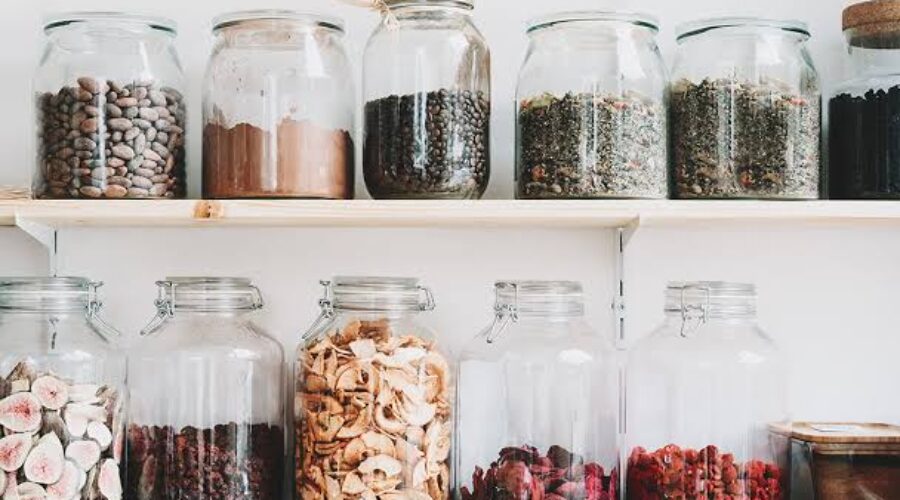How To Store Snacks For Freshness
Storing snacks properly is essential for maintaining their freshness, flavor, and nutritional value. Whether you’re dealing with homemade treats or store-bought options, understanding the best storage practices can help you enjoy your snacks for longer without compromising their quality.
This article will explore various tips and techniques for storing snacks, ensuring they remain delicious and safe to eat.
Understanding Snack Freshness
Snack freshness refers to the quality of the snack in terms of taste, texture, and nutritional value. Several factors can affect freshness, including exposure to air, moisture, light, and temperature. Proper storage can help mitigate these factors, preserving your snacks’ integrity and making them more enjoyable.
General Storage Tips for Snacks
1. Choose the Right Containers
The type of container you use for storing snacks plays a significant role in maintaining freshness. Here are some popular options:
- Airtight Containers: These are ideal for keeping moisture and air out. Glass jars, plastic containers, or resealable bags can work well.
- Vacuum Sealed Bags: For long-term storage, vacuum-sealed bags remove air, which can help prevent freezer burn and keep snacks fresh longer.
- Original Packaging: If the packaging is resealable, it’s often fine to keep snacks in their original packaging, especially for items like chips or pretzels.
2. Control the Temperature
Temperature is crucial for snack storage. Here are some guidelines:
- Room Temperature: Many snacks, such as granola bars, nuts, and dried fruits, can be stored at room temperature in a cool, dry place away from direct sunlight.
- Refrigeration: Perishable snacks like yogurt, certain cheeses, or any homemade snacks that contain dairy should be stored in the refrigerator.
- Freezing: For long-term storage, freezing can be a great option for snacks like baked goods, fruits, and some vegetables. Make sure to use freezer-safe containers or bags to prevent freezer burn.
3. Maintain Low Humidity
Humidity can lead to mold growth and spoilage. Here are some ways to manage humidity levels:
- Use Silica Gel Packs: Placing silica gel packs in containers can help absorb excess moisture, especially in snacks like nuts or dried fruits.
- Store in a Cool, Dry Place: Keep snacks away from sources of moisture, like kitchens with steam from cooking or areas prone to humidity.
4. Keep Away from Strong Odors
Snacks can easily absorb strong odors from other foods. To prevent this, store snacks separately from pungent items like onions or garlic. Airtight containers can help, but keeping strong-smelling foods in separate areas can further minimize the risk.
Specific Storage Tips for Popular Snacks
1. Chips and Crackers
Store chips and crackers in airtight containers or resealable bags after opening. If you find that they become stale, consider adding a small piece of bread to the container, which can help absorb moisture.
2. Nuts and Seeds
Nuts and seeds can go rancid due to their high-fat content. Store them in airtight containers in the refrigerator for up to six months, or in the freezer for longer storage.
3. Granola Bars
Granola bars can be stored in their original packaging or in airtight containers at room temperature. If you make homemade granola bars, wrap them individually in plastic wrap for better freshness.
4. Dried Fruits
Dried fruits should be kept in airtight containers in a cool, dark place. If you buy them in bulk, consider dividing them into smaller portions for easier access and to maintain freshness.
SEE ALSO:
Benefits Of Eating Plant-Based Snacks
Best Nigerian Drinks To Pair With Snacks
Best Snacks For Long Road Trips
5. Baked Foods
Homemade cookies, muffins, and other baked foods should be stored in airtight containers at room temperature for short-term storage. For long-term storage, freeze them, wrapped well in plastic wrap and placed in a freezer bag.
Signs of Spoilage
To ensure your snacks are still fresh, look for these signs of spoilage:
- Changes in Texture: If snacks feel soggy, stale, or overly hard, they may be past their prime.
- Unpleasant Odors: Off or rancid smells can indicate spoilage, especially in items like nuts or oils.
- Visible Mold or Discoloration: If you see any signs of mold or unusual colors, it’s best to discard the snack.
FAQs on How To Store Snacks For Freshness
How long can I store snacks in the pantry?
The storage duration for pantry snacks varies by type. Generally, unopened snacks can last for months, while opened snacks like chips or crackers may only stay fresh for a few weeks. Always check for best-by dates and follow storage guidelines for optimal freshness.
Can I freeze snacks like chips or crackers?
Freezing chips or crackers is not recommended, as it can change their texture and make them lose their crispness. However, you can freeze other snacks like baked goods, fruits, and some vegetables.
How can I tell if nuts are stale?
Stale nuts often have a rancid or off smell and can taste bitter. If they feel soft or rubbery instead of crunchy, they may have gone bad. It’s best to check nuts regularly if stored for an extended period.
What’s the best way to store popcorn?
Unpopped popcorn kernels should be stored in an airtight container in a cool, dry place. Once popped, store popcorn in an airtight container, but try to consume it within a few days for the best taste and texture.
Can I store snacks in the refrigerator?
Some snacks, particularly perishable items like yogurt or certain cheeses, should be stored in the refrigerator. However, many snacks, like chips and nuts, are best kept at room temperature in a cool, dry place.
What’s the ideal temperature for snack storage?
Most snacks should be stored at room temperature, ideally between 68°F to 72°F (20°C to 22°C), away from direct sunlight. Perishable snacks should be kept in the refrigerator, ideally at temperatures below 40°F (4°C).
Wrapping Up
Proper snack storage is essential for maintaining freshness, flavor, and safety. By choosing the right containers, controlling temperature and humidity, and being mindful of strong odors, you can enjoy your favorite snacks for longer.
Understanding the specific storage needs of various snacks and recognizing signs of spoilage will ensure that you get the most out of your treats.
With these tips and tricks, you can keep your snacks delicious and enjoyable, whether for yourself or to share with friends and family.



